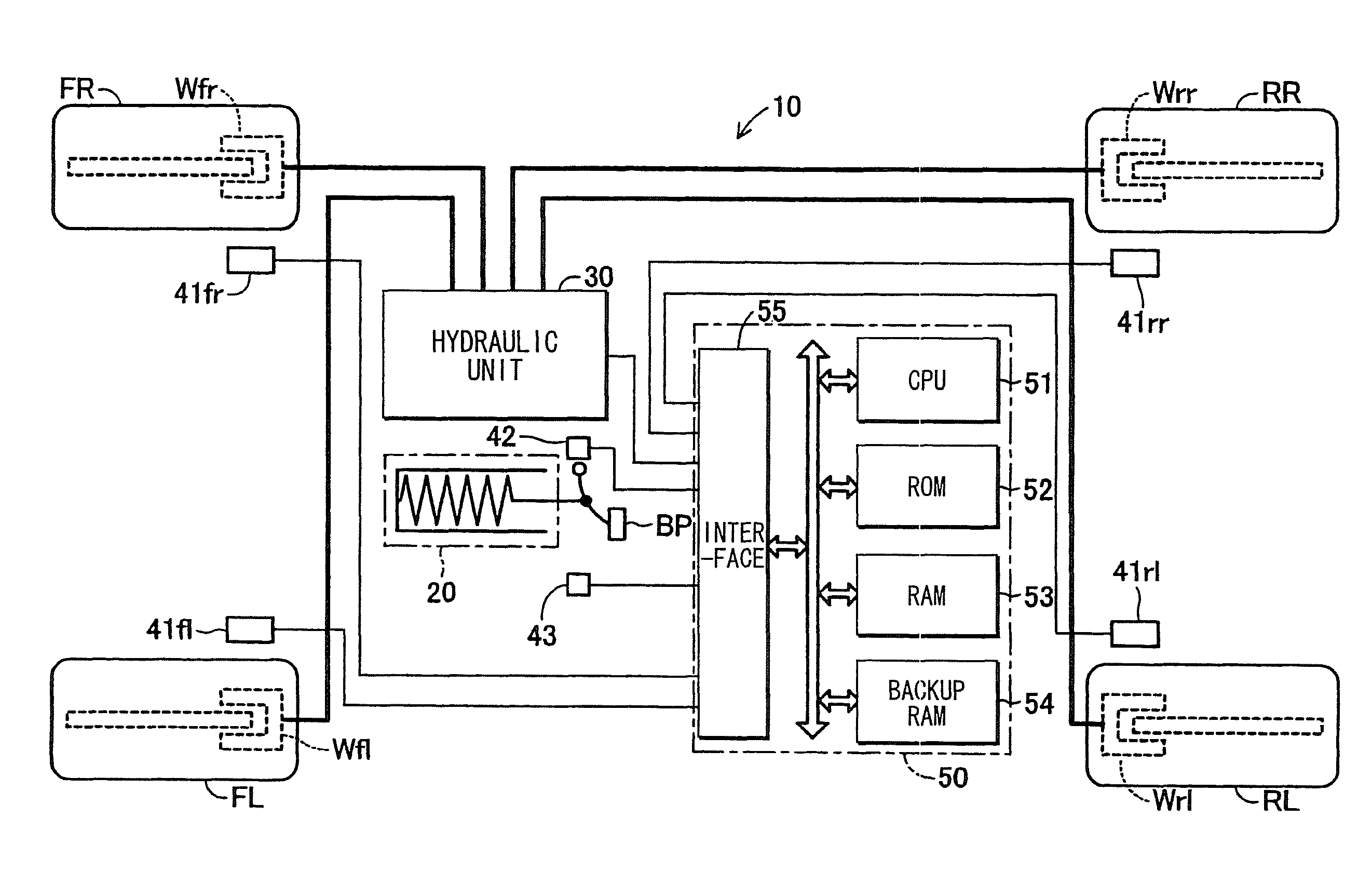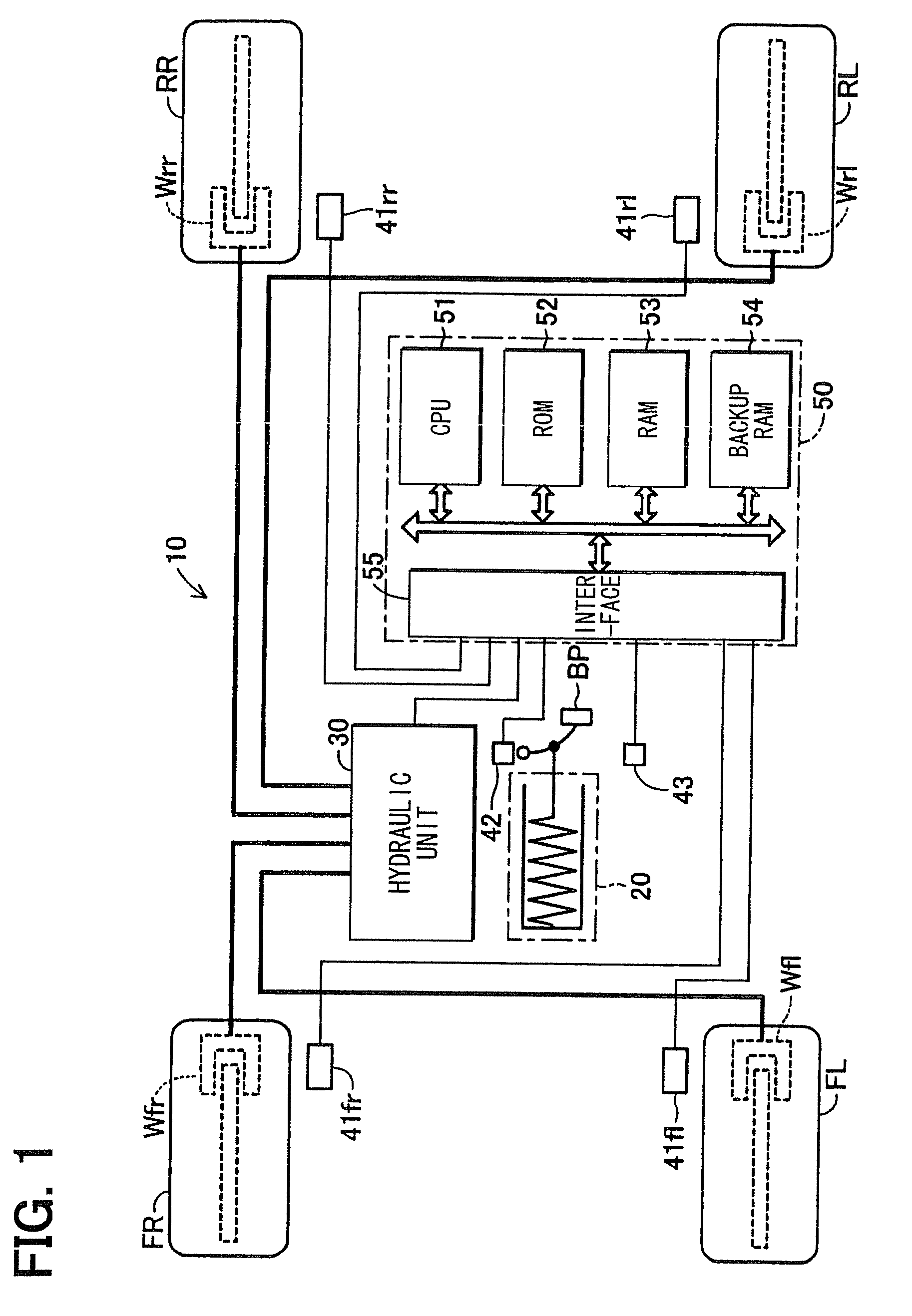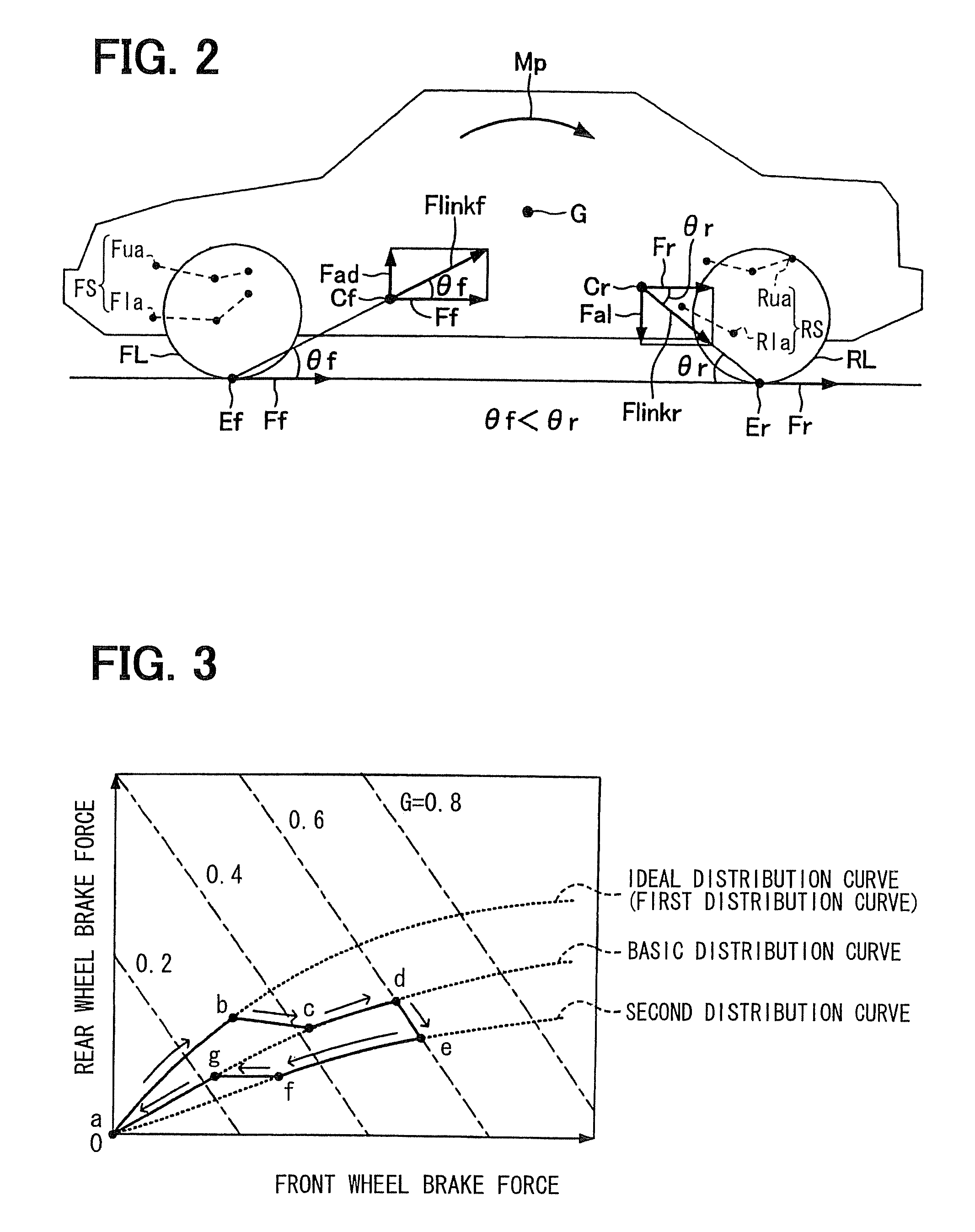Motion control system for vehicle
a technology of motion control and vehicle, which is applied in the direction of process and machine control, instruments, cycle equipment, etc., can solve the problems of deteriorating the ride feeling of an occupant(s) of the vehicle, vehicle front-to-back, and vehicle body as a vertical force, so as to reduce the anti-pitching effect and reduce the pitch angl
- Summary
- Abstract
- Description
- Claims
- Application Information
AI Technical Summary
Benefits of technology
Problems solved by technology
Method used
Image
Examples
Embodiment Construction
[0043]A vehicle motion control system according to an embodiment of the present invention will be described with reference to the accompanying drawings. FIG. 1 shows a schematic structure of a vehicle, in which the vehicle motion control system 10 of the present embodiment is installed.
[0044]In the vehicle motion control system 10, a brake-by-wire system is provided, and a brake pedal BP (a brake operating member) and a brake fluid pressure circuit are separated. The vehicle motion control system 10 includes a stroke simulator mechanism 20 and a hydraulic unit 30. The hydraulic unit 30 applies a brake fluid hydraulic pressure to generate a brake force at respective vehicle wheels FL, FR, RL, RR.
[0045]The stroke simulator mechanism 20 includes a known reaction force applying mechanism, which applies an appropriate reaction force (=brake pedal pressing force Fp) that corresponds to a stroke of the brake pedal BP, to the brake pedal BP. The reaction force applying mechanism will not be...
PUM
 Login to View More
Login to View More Abstract
Description
Claims
Application Information
 Login to View More
Login to View More - R&D
- Intellectual Property
- Life Sciences
- Materials
- Tech Scout
- Unparalleled Data Quality
- Higher Quality Content
- 60% Fewer Hallucinations
Browse by: Latest US Patents, China's latest patents, Technical Efficacy Thesaurus, Application Domain, Technology Topic, Popular Technical Reports.
© 2025 PatSnap. All rights reserved.Legal|Privacy policy|Modern Slavery Act Transparency Statement|Sitemap|About US| Contact US: help@patsnap.com



